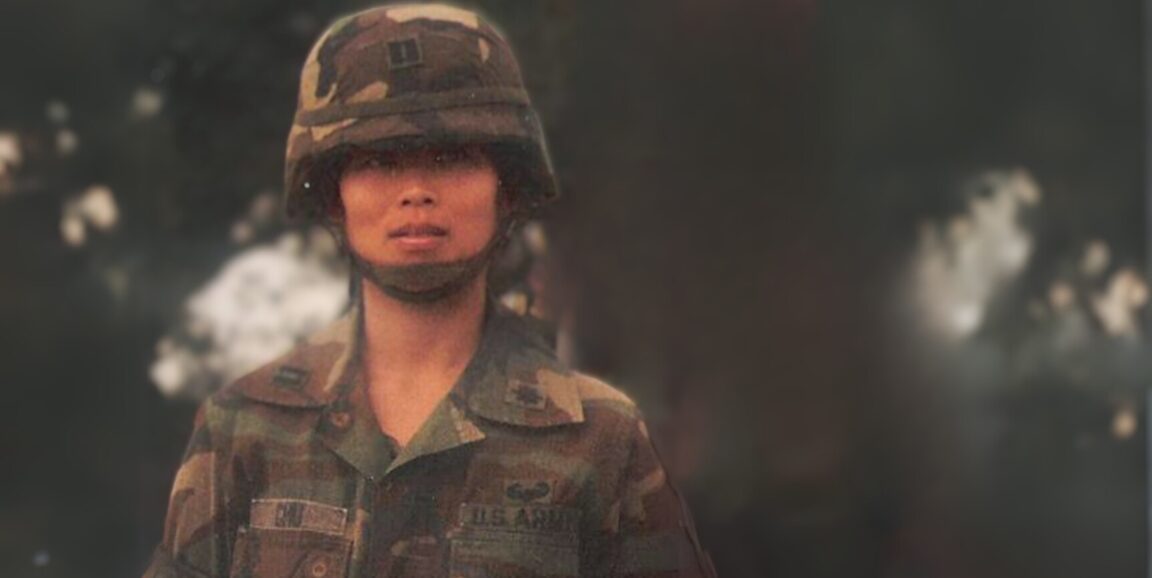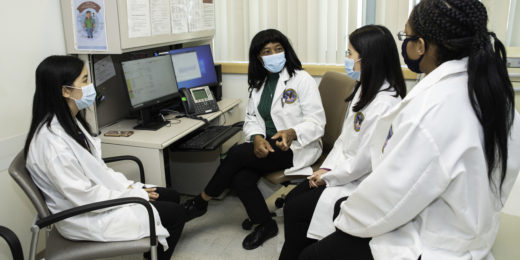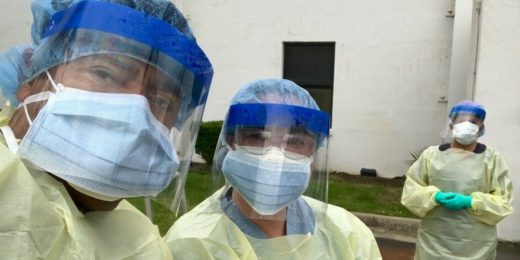When Constance Chu graduated from West Point United States Military Academy in 1983, she was part of just the fourth class to include women cadets. After graduation, she quickly rose through the ranks, commanding a military intelligence unit and leading soldiers using advanced imaging technologies to determine enemy capabilities and predict longer-term foreign threats.
Today, as a professor of orthopaedic surgery at Stanford Medicine, she focuses on a different kind of imaging, conducting research that harnesses imaging technologies to find early warning signs of joint disease in young patients after anterior cruciate ligament injury (ACL) and to develop new treatments for joint pain and degeneration.
As a proud veteran and surgeon, Chu also directs the Joint Preservation Center and leads the Sports Medicine program at the Veterans Affairs Palo Alto Health Care System. As she continues to serve the military veteran population, Chu discusses how her experience in the army has informed her clinical practice and research.
What motivated you to study at West Point and why did you transition to a career in medicine?
I was very active and athletic as a child, and I loved being outdoors. It sounded interesting and exciting to be outside doing military training, learning about leadership and accepting the challenge of pursuing equal opportunities as one of the first women to attend West Point.
At West Point, we were trained to lead soldiers into combat. When it came time for us to select our branches, Army, Navy, Air Force, Marines or Coast Guard, I learned about the Combat Exclusion Policy, which excluded women from prime combat arms assignments. It has since been lifted, but at the time, I remember thinking that the glass ceiling in the military was thicker than I thought, and I started considering other opportunities that were equally open to women.
About a year after graduation, we tragically lost my father to cancer. My younger sister was a biology major at Harvard, and I became more of a mentor to her. When she was trying to decide between pursuing a PhD in biology or an MD/PhD, I went through the pros and cons with her. I remember saying to her, "With the MD, you can do anything -- you can do research; you can take care of patients; or you can move into administration. It looks like a versatile way to pursue your interests in biology and have a broader range of opportunities." I remember sitting there thinking that the MD sounds like a pretty good idea. I've always been motivated by service to mankind, and I basically convinced myself pursuing a medical degree was what I wanted to do as well.
We both ultimately took that path. After my sister graduated from college, she got her MD/PhD from Duke, and I got my MD from Harvard Medical School.
How did your military experience prepare you for a career in medicine?
At West Point, cadets learn situational awareness so they can quickly assess and determine what needs to be done first and communicate that to people under stressful situations. You also can't succeed in leading soldiers without certain skills: the ability to deal with stress in all different forms, whether it's sleep deprivation or other people's fears and anxieties; working with people from all walks of life; and having empathy. All of these skills helped me succeed in medical school, as a surgeon, and in developing and leading multi-disciplinary research teams.
My job as a physician-scientist has many parallels to what I did as an intelligence officer when I deployed new technologies to look for early warning signs of impending danger and to help develop intervention plans. In the military, the combat arms, which I was excluded from, would then implement those plans. The good part about also being a surgeon is that I can lead research and the execution of clinical decisions as well.
What ailments do you treat in a veteran population?
Veterans, particularly combat veterans, carry physical, mental and psychological injuries. Those who have served in the military often suffer from joint pain and tissue degeneration at younger ages and to a greater severity than the general population. Military work is hard on the body. During training maneuvers, I've carried more than half my body weight in equipment over rough terrain, under time pressure and with no sleep.
In combat, life-altering, horrendous injuries and loss of life are on the table. We all owe a great debt to those who put everything on the line to defend our freedoms. It's one of the motivating factors behind my desire to ease chronic pain and restore mobility among those who have served, and it drives me to seek out ways to rejuvenate and heal damaged joints.
How do you tailor your care or research to best support this group?
Whether it means spending my nights and weekends writing grants, setting up regenerative medicine programs for veterans, or creating opportunities for trainees and colleagues to advance veteran-focused work, I want to advance the care we provide to veterans. Our Sports Medicine program at the VA Palo Alto includes Stanford fellowship-trained physicians and surgeons who help conduct adaptive sports, shoulder and knee surgeries.
When I first came to Stanford Medicine, I thought, I'd really love to build something meaningful that integrates orthopaedic care with top-level research. I currently lead a Department of Defense Program Project based at Stanford Medicine, among other projects, which are multi-site, multi-investigator programs integrating bench to bedside research with clinical care. I've been working on getting these programs to the next level where we can bring some of the new treatments into the clinic.
I'm very proud to be a veteran, and I'm thankful I get to continue to be of service in my current work at Stanford and the VA Palo Alto.
Photo: Courtesy Constance Chu






